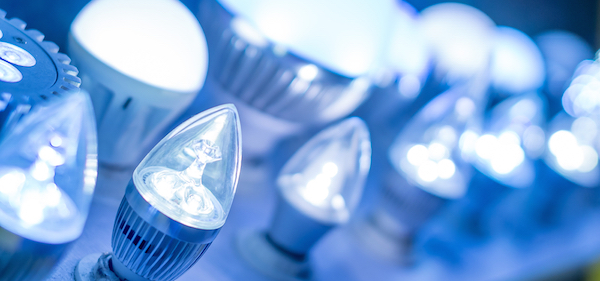Do you feel like you’ve been left in the dark when it comes to new light bulb technology? Find out how to get the most out of your bulbs in both energy and cost efficiency.
Before we get started with the different types of light bulbs available on the market, here are some of the key terms of which to be aware to help make sense of the different types of light bulbs available.
Lumens
The power of light bulbs has been traditionally measured in watts (w), which is the amount of energy they consume. This was suitable when the market was dominated by incandescent and the relatively similar halogen bulbs. But new types of light bulbs have an emphasis on energy efficiency, so watts are no longer the standard. Lumens (lm) measure the actual brightness of the bulb. The table below will give you a rough idea of how bright traditional incandescent and halogen bulbs are, which will help you to find suitable replacements.
|
Incandescent or halogen |
Lumens |
|
40w |
450 |
|
60w |
800 |
|
75w |
1100 |
|
100w |
1600 |
|
150w |
2600 |
Colour temperature
One of the most common complaints with energy-efficient bulbs is that the light they produce is unpleasantly blue. New technology is allowing energy efficient bulbs to produce warmer and more natural-feeling light, but the most efficient bulbs will unfortunately be the ones with the harsher, bluish light. Colour temperature is measured in Kelvin (K) and you can use this chart below to help you choose the right lights for your situation.

Colour rendering index (CRI)
CRI is the ability of a light bulb to make colours appear the way they would with natural light. You’ve probably noticed that colours appear ‘off’ under some lights, particularly energy efficient lights. This is due to a low colour rendering index. CRI is measured on a scale of a hundred, with incandescent and halogen bulbs scoring around the 100 mark. Most people will be happy with anything over 80 on the CRI, but if you have colour sensitive hobbies, such as drawing or painting, you might want to look out for a higher-scoring CRI with your light bulb.
Now that we’ve got these key points out of the way, head over to the NEXT page to find out about the pros and cons of each type of light bulb, particularly when it comes to cost and energy efficiency.
Incandescent
Due to their inefficiency, incandescent light bulbs are being phased out of sale, at least for home use. You can still find some varieties, but unless you are replacing a specific bulb (such as an oven light), you’ll be better off going for its similar but more efficient counterpart, the halogen.
Halogen
The halogen bulb functions the same as the traditional incandescent, but contains a small amount of halogen gas around the light filament. This greatly improves the light bulb’s life span. They have a life span of around 1000 hours, a warm yellow colour light and are slightly more energy efficient than the traditional incandescent.
CFL
Over the past decade, compact fluorescent lamps are likely to be the energy-saving bulbs that you’ve come to know. They are very energy efficient, typically produce a bluish-white coloured light, and are usually quite affordable too. But cheaper models are not likely to live out their estimated life span, so it might be worth investing in a more expensive model. While they have a lifespan of approximately 10,000 hours, using the bulbs for short durations will reduce their lifespan. They will also produce less light in very cold temperatures, sometimes not turning on at all. Most CFL bulbs are not dimmable and will take a bit of time after turning on to reach their maximum brightness.
LED
Light emitting diodes are the little indicator lights you’ve probably seen on anything electronic since the 1980s, usually appearing as a small red or green light to tell you whether or not a device is turned on. Your TV or computer probably has a few installed for this purpose. Recent breakthroughs in technology and significant drops in price have introduced the humble LED into home light bulbs, and it is looking as if they will be the number one choice in the coming years. This is due to their incredible life spans (with some models having life expectancies of 25,000 hours), and energy efficiency that typically trumps that of the CFL.
LED bulbs are available in a variety of colour temperatures and some models come with warranties lasting up to 10 years. The high initial cost has shied customers away in the past, but as prices are continuing to drop, these bulbs should pay for themselves many times over.
Read more at Tom’s Guide and CNET.
Do you have energy-efficient bulbs installed in your house? Or do you prefer traditional lighting with its high CRI and warm colour?

